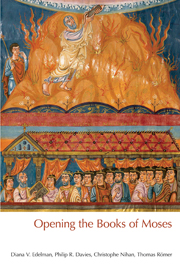4 - Key Themes in the Pentateuch
Summary
Torah
i. Etymology and Semantics
The designation of the Pentateuch as the ‘Torah’ represents a specialized use of a much more comprehensive term in Hebrew. In the Pentateuch itself, torah is used in a variety of ways. It is essential, therefore, that we begin with a brief analysis of the term itself in order to grasp the relationship between the various meanings of torah and the canonical ‘Torah’ as a comprehensive designation.
Hebrew torah is derived from the root yrh, meaning ‘to send/transmit orders or instructions’ and, by extension, ‘to teach’. It is rendered, therefore, by ‘teaching’ or ‘instruction’, even though the specific meaning varies significantly according to context. Former attempts to connect torah to the same root, which has a second meaning of ‘to throw, hurl’, have proved incorrect. Interestingly, the substantive tertu(m), formed in the same way as torah by prefixing a ‘t’ to the underlying root, is found in Akkadian texts from Mari and designates an ‘omen’ or an ‘oracle’. Even though an oracular context is not always obvious in the Hebrew Bible, this etymology suggests the term torah could be used typically to refer to an individual instruction of divine origin. However, torah has taken on different meanings according to the scribal and social contexts in which it has been used. Three such ideological contexts can be distinguished: the temple, prophecy and wisdom, which correspond to the three main classes of specialists for interpreting divine directives: priests, prophets and sages. The semantic nuances developed in these three contexts are all reflected, to different degrees, in the Torah itself.
- Type
- Chapter
- Information
- Opening the Books of Moses , pp. 93 - 180Publisher: Acumen PublishingPrint publication year: 2012

